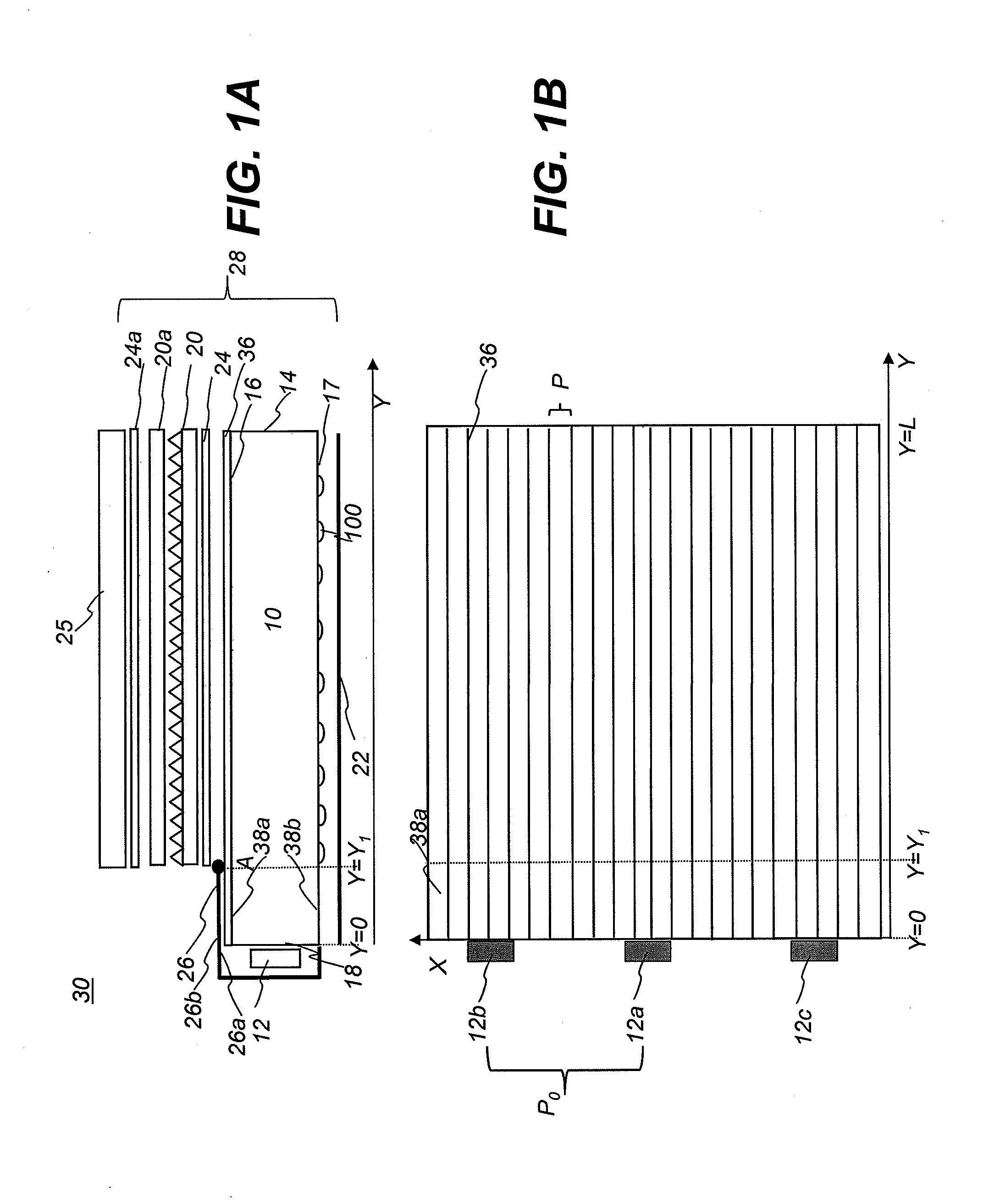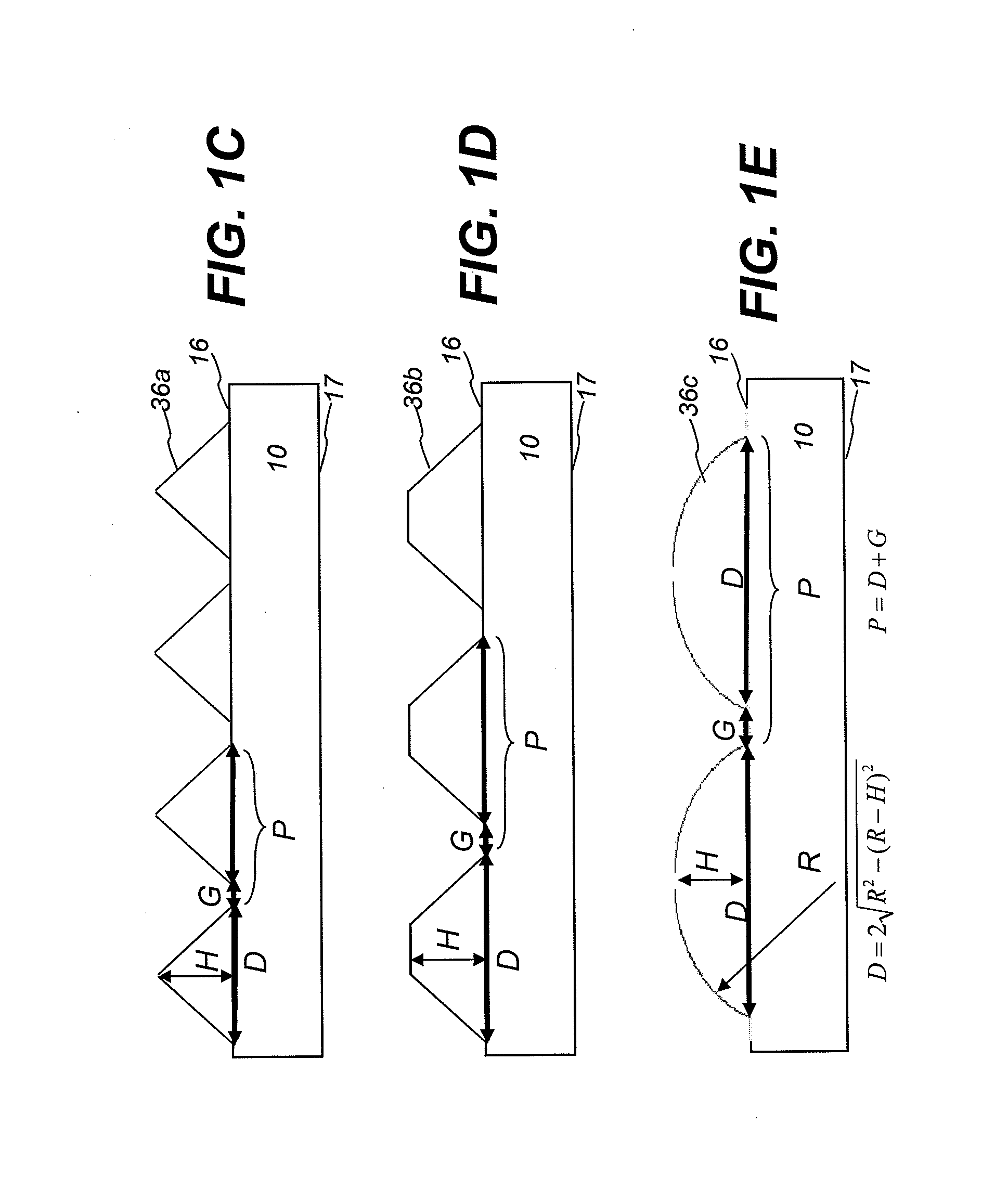Method for reducing hot spots in light guide plates
a technology of light guide plate and hot spot reduction, which is applied in the direction of instruments, lighting and heating apparatus, mechanical apparatus, etc., can solve the problems of not being satisfactory and becoming larger, and achieve the effect of reducing hot spots
- Summary
- Abstract
- Description
- Claims
- Application Information
AI Technical Summary
Benefits of technology
Problems solved by technology
Method used
Image
Examples
Embodiment Construction
[0021]FIG. 1A shows schematically a side view of an LCD display apparatus 30 comprising an LCD panel 25 and a backlight unit 28. Backlight unit 28 comprises a plurality of optical components including one or two prismatic films 20, 20a, one or two diffusive films 24, 24a, a bottom reflective film 22, a top reflective component 26, and a light guide plate (LGP) 10. LGP 10 is different from the other optical components in that it receives the light emitted from one or more light sources 12 through its input surface 18, redirects the light emitted through its bottom surface 17, end surface 14, output surface 16, side surfaces 15a, 15b (not shown) and reflective film 22, and eventually provides light relatively uniform to the other optical components. Output surface 16 has a plurality of elongated grooves 36. Targeted luminance uniformity is achieved by controlling the density, size, and / or orientation of the lenses 100 (sometimes referred to as discrete elements, or light extractors) o...
PUM
 Login to View More
Login to View More Abstract
Description
Claims
Application Information
 Login to View More
Login to View More - R&D
- Intellectual Property
- Life Sciences
- Materials
- Tech Scout
- Unparalleled Data Quality
- Higher Quality Content
- 60% Fewer Hallucinations
Browse by: Latest US Patents, China's latest patents, Technical Efficacy Thesaurus, Application Domain, Technology Topic, Popular Technical Reports.
© 2025 PatSnap. All rights reserved.Legal|Privacy policy|Modern Slavery Act Transparency Statement|Sitemap|About US| Contact US: help@patsnap.com



